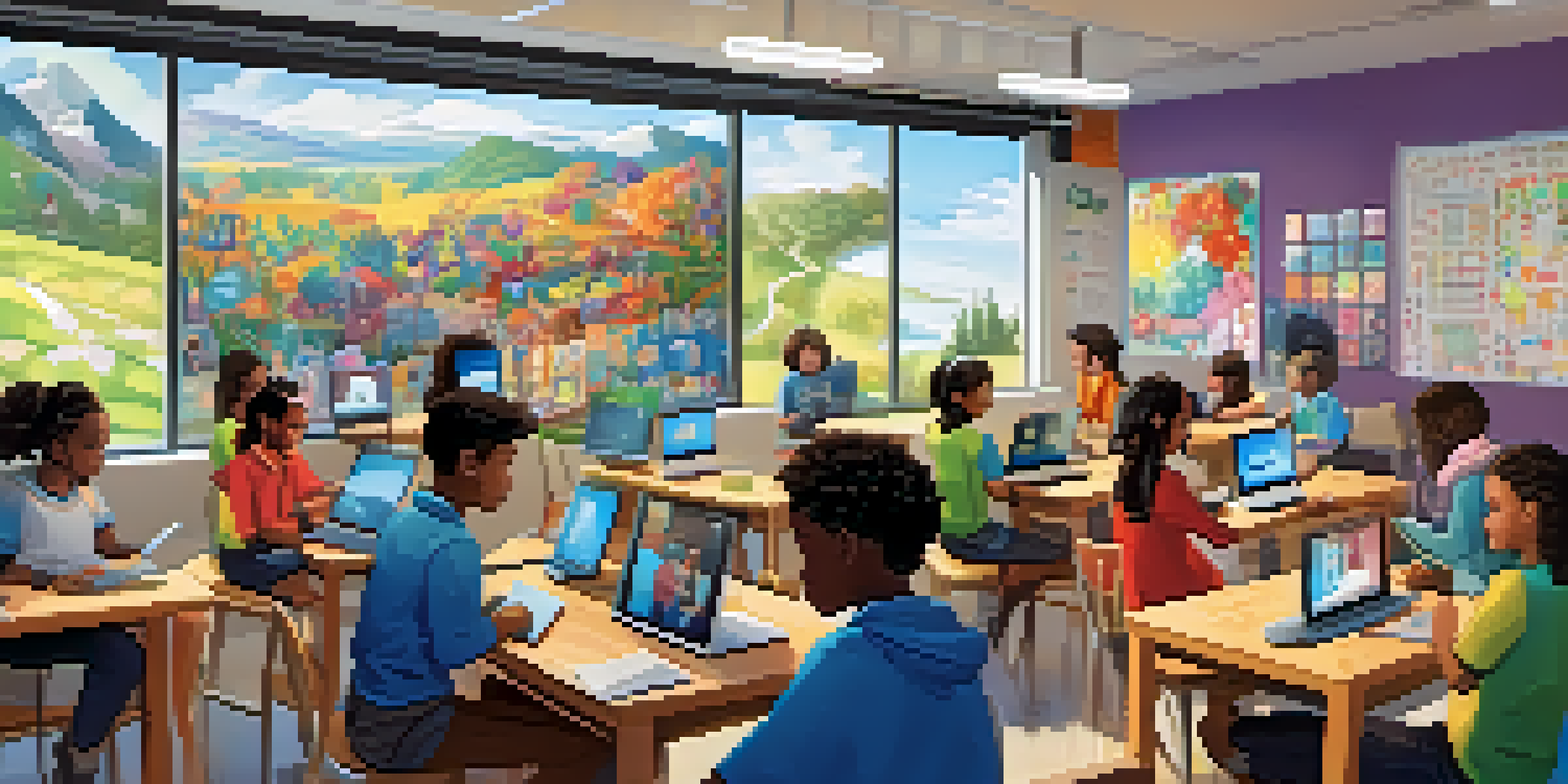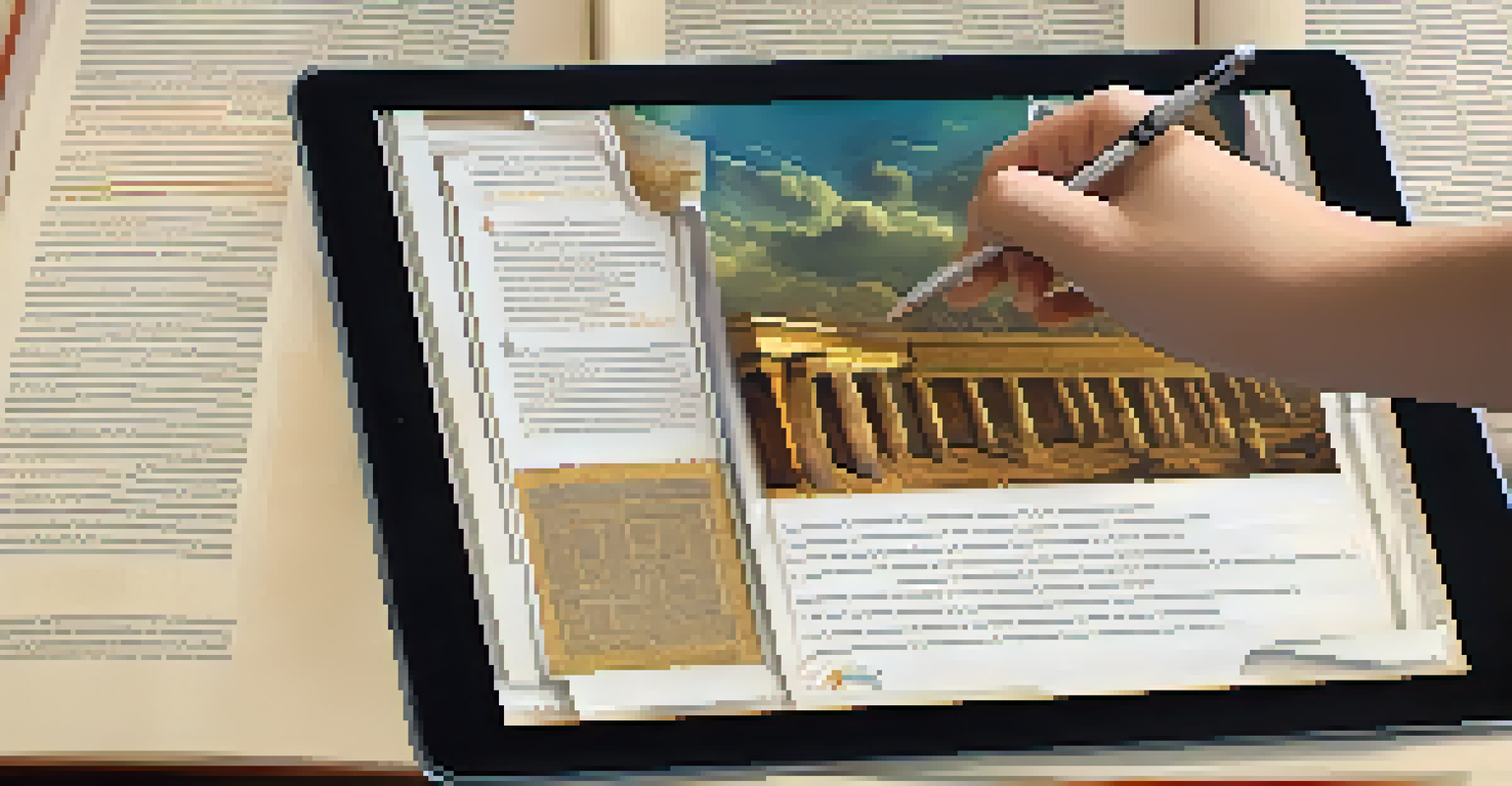Engaging Different Learning Styles with Transmedia Approaches

Understanding Learning Styles and Transmedia
Learning styles refer to the various ways individuals absorb and process information. Some may prefer visual cues, while others might lean towards auditory or kinesthetic experiences. Transmedia, on the other hand, involves storytelling across multiple platforms, allowing learners to engage with content in diverse ways.
Tell me and I forget. Teach me and I remember. Involve me and I learn.
By blending these two concepts, educators can create a rich learning environment that caters to every student's needs. For instance, a single story can be told through a video, an article, and interactive games, ensuring that all learners find something that resonates with them. This approach not only enhances understanding but also keeps students invested.
Ultimately, the goal is to create a comprehensive learning experience that promotes engagement and retention. When students can interact with material in various formats, they are more likely to connect with the content and apply it in real-world scenarios.
The Benefits of Transmedia Learning for Students
Transmedia learning offers several advantages that can transform the educational landscape. One of the most significant benefits is the ability to reach students with different preferences and strengths. For example, visual learners can thrive with infographics, while auditory learners may benefit from podcasts.

Additionally, transmedia approaches can fuel creativity and critical thinking. When students are encouraged to engage with content through different mediums, they are more likely to think outside the box and make connections between concepts. This multidimensional interaction can spark curiosity and a love for learning.
Diverse Learning Styles Enhanced
Transmedia learning caters to various learning styles by incorporating multiple formats, ensuring all students can engage with content in a way that resonates with them.
Moreover, transmedia learning fosters collaboration among students. When projects involve various formats, learners can work together, combining their strengths to create a comprehensive final product. This not only builds teamwork skills but also enhances their understanding of the subject matter.
Examples of Transmedia Learning in Action
Imagine a history lesson on ancient civilizations. Instead of relying solely on textbooks, educators could create a transmedia experience that includes documentaries, interactive timelines, and virtual reality explorations. Students can choose how they want to engage with the material, catering to their unique learning styles.
The ability to learn faster than your competitors may be the only sustainable competitive advantage.
Another example could be teaching literature through a mix of audiobooks, graphic novels, and social media discussions. By approaching the same story from various angles, students can develop a deeper appreciation and understanding of the themes and characters involved.
These examples illustrate how transmedia learning can break traditional barriers, making education not only more engaging but also more effective. By incorporating diverse formats, educators can create a rich tapestry of learning that inspires and motivates students.
How to Implement Transmedia Strategies in the Classroom
Implementing transmedia strategies in the classroom starts with identifying the core concepts you want to teach. Once you have a clear objective, brainstorm various platforms that can bring the content to life. Whether it's through videos, podcasts, or interactive games, consider the strengths of each medium.
Next, involve students in the process. Ask for their input on which formats they find most engaging. This collaborative approach not only empowers learners but also ensures that the chosen platforms align with their interests and preferences.
Collaboration Boosts Understanding
Transmedia approaches promote collaboration among students, allowing them to combine their strengths and enhance their understanding of the subject matter.
Finally, assess the effectiveness of your transmedia initiatives. Gather feedback from students about what they enjoyed and what they learned. This continuous loop of feedback will help you refine your strategies and create even more engaging learning experiences in the future.
Challenges of Adopting Transmedia Learning Approaches
While transmedia learning has countless benefits, it's not without its challenges. One significant hurdle is the potential for information overload. With so many platforms and formats available, students could feel overwhelmed if not guided effectively.
Another challenge lies in resource availability. Not all educators have access to the technology or tools needed to create a transmedia experience. It's essential for schools to invest in the necessary resources, ensuring that every student has the opportunity to engage with diverse learning materials.
Lastly, teachers may need additional training to effectively implement transmedia strategies. Professional development opportunities can equip educators with the skills and knowledge required to navigate multiple platforms and create cohesive learning experiences.
The Role of Technology in Transmedia Learning
Technology plays a pivotal role in facilitating transmedia learning. With the rise of digital tools, educators can easily create and share content across various platforms. From video editing software to interactive learning apps, the possibilities are endless.
Moreover, technology allows for real-time feedback and assessment. Educators can monitor student engagement through analytics, adjusting their strategies as needed. This responsiveness ensures that learning remains tailored to the needs of each individual.
Technology Enables Immersive Learning
Emerging technologies like AR and VR are set to revolutionize transmedia learning, creating immersive experiences that engage students in innovative ways.
Additionally, technology can bridge gaps for students who may struggle with traditional learning methods. For example, adaptive learning software can adjust the difficulty level based on a student's performance, providing a personalized learning journey that meets their needs.
Future Trends in Transmedia Learning
As we look to the future, transmedia learning is poised to evolve even further. Emerging technologies like augmented reality (AR) and virtual reality (VR) are expected to play significant roles in creating immersive learning experiences. Imagine students being able to step into historical events or explore scientific concepts in a virtual lab.
Furthermore, we can anticipate a more significant emphasis on collaboration among educators. Sharing resources and strategies for transmedia approaches can create a more unified educational experience across different institutions. This collective effort can lead to richer, more engaging learning environments.

Lastly, as the world continues to change rapidly, education must adapt. Transmedia learning can help learners develop the skills they need to navigate a complex world, encouraging adaptability and resilience. By embracing this approach, we can prepare students for the challenges of tomorrow.